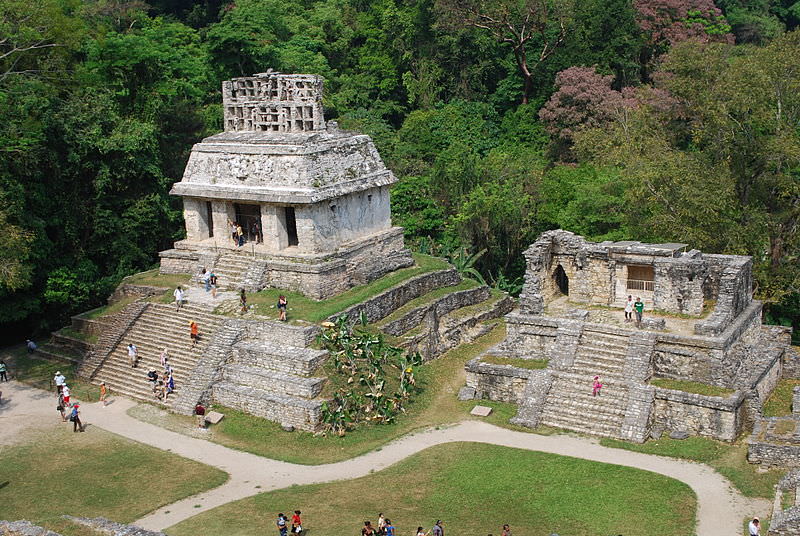Overview
Introduction to Ancient Civilizations
Ancient civilizations have always captivated the imagination of historians and archaeologists. These remarkable societies, with their advanced knowledge and impressive achievements, continue to astound us to this day. From the majestic pyramids of Egypt to the intricate ruins of Machu Picchu, each civilization left behind a legacy that tells a story of innovation, resilience, and cultural richness. Exploring the mysteries of the past allows us to uncover the secrets and hidden treasures of these ancient societies, shedding light on their customs, beliefs, and way of life. By delving into the archaeological records and deciphering ancient texts, we can piece together the puzzle of our human history and gain a deeper understanding of the world that existed before us.
Significance of Studying Ancient Civilizations
Studying ancient civilizations is of utmost importance as it allows us to delve into the depths of human history and gain valuable insights into the origins of our modern society. By examining the achievements, customs, and cultural practices of these ancient societies, we can better understand the development of human civilization and appreciate the progress we have made over time. Ancient civilizations such as the Egyptians, Greeks, and Romans have left behind a wealth of knowledge and artifacts that provide a window into their daily lives, religious beliefs, and technological advancements. Through the study of ancient civilizations, we can uncover the untold secrets and mysteries of the past, shedding light on aspects of human existence that may have been forgotten or overlooked. From the construction of monumental structures like the pyramids of Egypt to the intricate artwork of the Renaissance, ancient civilizations have shaped the course of human history in profound ways. It is through this exploration that we can gain a deeper understanding of our own identity and appreciate the rich tapestry of cultures that have come before us.
Methods of Studying Ancient Civilizations
Studying ancient civilizations is a fascinating endeavor that requires a combination of various methods and disciplines. Archaeology is one of the primary methods used to uncover the secrets of the past. Through careful excavation and analysis of artifacts and structures, archaeologists are able to piece together the puzzle of ancient societies. Another important method is historical research, which involves studying ancient texts, inscriptions, and documents to gain insights into the beliefs, customs, and daily lives of ancient peoples. Anthropology also plays a crucial role in understanding ancient civilizations by examining the cultural, social, and biological aspects of past societies. By studying the remains of ancient humans, anthropologists can learn about their diet, health, and even migration patterns. Additionally, geography provides valuable context for understanding ancient civilizations. By analyzing the physical environment and its impact on human settlements, researchers can gain insights into how ancient societies adapted to their surroundings. Finally, carbon dating and other scientific techniques are used to determine the age of artifacts and establish chronologies of ancient civilizations. These methods, combined with interdisciplinary collaboration, allow us to uncover the untold secrets of ancient civilizations that have been unearthed through years of research and exploration.
The Rise and Fall of Ancient Egypt

The Birth of Ancient Egypt
Ancient Egypt, one of the most fascinating civilizations in history, has always been shrouded in mystery and intrigue. The origins of this ancient civilization date back to around 3100 BCE, when the first Pharaoh, Narmer, united Upper and Lower Egypt. This event marked the beginning of a long and prosperous era for Ancient Egypt. Hieroglyphics, the ancient writing system of the Egyptians, played a crucial role in recording the history and culture of this civilization. The construction of monumental structures such as the Great Pyramids of Giza and the Sphinx showcased the advanced architectural skills of the Egyptians. The Nile River, often referred to as the lifeblood of Egypt, played a vital role in the development and sustenance of the civilization. The Egyptians worshipped a pantheon of gods and goddesses, with Ra, the sun god, being one of the most revered deities. The civilization thrived for thousands of years, leaving behind a legacy of art, science, and spirituality that continues to captivate the world today.
Achievements and Contributions of Ancient Egypt
Ancient Egypt, one of the most fascinating civilizations in history, left behind a legacy of remarkable achievements and contributions that continue to captivate the world. From monumental architectural marvels such as the Great Pyramids of Giza to advancements in agriculture and medicine, the ancient Egyptians were pioneers in various fields. Their mastery of engineering and mathematics enabled them to build awe-inspiring structures that still stand today, serving as a testament to their ingenuity and skill. The exploration of ancient sites has revealed invaluable insights into the daily lives, beliefs, and customs of the ancient Egyptians, shedding light on a civilization that thrived thousands of years ago.
The Decline and Legacy of Ancient Egypt
The decline of Ancient Egypt marked the end of a glorious era, but its legacy continues to captivate the world. Despite the passage of time, recent archaeological discoveries have shed new light on the mysteries of this ancient civilization. These findings have revealed fascinating insights into the daily lives, beliefs, and achievements of the Egyptians. One such discovery is the tomb of Tutankhamun, the boy king whose burial chamber contained a treasure trove of priceless artifacts. The discovery of this tomb in 1922 by British archaeologist Howard Carter sparked a renewed interest in Ancient Egypt and led to further excavations and studies. The decipherment of hieroglyphics, the ancient Egyptian writing system, has also been instrumental in unraveling the secrets of this civilization. Through the translation of ancient texts, historians have gained a deeper understanding of the political, religious, and cultural aspects of Ancient Egypt. These recent discoveries have not only expanded our knowledge of the past but have also deepened our appreciation for the ingenuity and artistry of the ancient Egyptians.
Unraveling the Secrets of the Mayan Civilization

The Origins and Development of the Mayan Civilization
The Mayan civilization is one of the most fascinating and enigmatic ancient civilizations in the world. Untold Stories of Ancient Civilizations are waiting to be discovered, and the Maya hold many secrets that continue to captivate researchers and archaeologists. The origins of the Mayan civilization can be traced back to around 2000 BCE in the region that is now modern-day Mexico and Central America. Over the centuries, the Maya developed a complex society with a sophisticated system of writing, impressive architectural achievements, and a deep understanding of astronomy. They built magnificent cities with grand temples, intricate palaces, and observatories that aligned with celestial events. The Mayans were skilled farmers, cultivating crops such as maize, beans, and squash. They also excelled in trade, creating a vast network that connected different regions. The Mayan civilization reached its peak between 250 and 900 CE, during which time they made significant advancements in mathematics, calendar systems, and the arts. However, by the 10th century, the Mayan civilization began to decline, and many of their cities were abandoned. The reasons for the collapse of the Mayan civilization are still debated by scholars, with theories ranging from environmental factors to political unrest. Today, the remnants of the Mayan civilization can be found in the ruins of their once-great cities, such as Chichen Itza, Tikal, and Palenque, which continue to inspire awe and curiosity.
The Mayan Calendar and Astronomy
The Mayan civilization, known for their advanced understanding of astronomy, developed a sophisticated calendar system that still baffles historians and scientists today. The Mayan calendar is one of the most accurate calendars ever created, with its calculations based on astronomical observations. It consists of several interlocking cycles, including the Long Count, which measures time in units of 20, called kins, and the Tzolk’in, a 260-day ritual cycle. The precision of the Mayan calendar in predicting celestial events, such as solstices and eclipses, is remarkable considering it was developed without the aid of modern technology. However, despite extensive research and decipherment efforts, there are still unsolved historical enigmas surrounding certain aspects of the Mayan calendar system. These mysteries continue to captivate the imagination of scholars and enthusiasts alike, as they delve into the secrets of this ancient civilization’s knowledge and achievements.
The Mysterious Collapse of the Mayan Civilization
The mysterious collapse of the Mayan civilization is one of the most intriguing mysteries of the ancient world. The Mayans, known for their advanced knowledge in astronomy, mathematics, and architecture, flourished for centuries in the region that is now modern-day Mexico and Central America. However, around the 9th century AD, their once-thriving cities were abandoned, and the civilization seemingly vanished without a trace. Scholars have proposed various theories to explain this enigmatic collapse, but none have been able to provide a definitive answer.
One theory suggests that environmental factors played a significant role in the downfall of the Mayan civilization. The region experienced a severe drought during the period leading up to the collapse, which could have led to crop failures and widespread famine. Additionally, deforestation and overpopulation may have also contributed to the ecological decline, further weakening the society.
Another theory points to social and political factors as the cause of the collapse. The Mayan civilization was divided into numerous city-states, each with its own ruler. It is believed that conflicts and warfare between these city-states escalated during the later years, leading to political instability and social unrest. This internal strife, combined with external pressures from neighboring civilizations, may have ultimately led to the collapse.
The collapse of the Mayan civilization remains a captivating mystery that continues to fascinate archaeologists and historians. The intricate knowledge and achievements of the Mayans, combined with their sudden disappearance, have sparked numerous speculations and debates. Despite decades of research and excavation, the true reasons behind their collapse remain elusive, shrouded in the mists of time, waiting to be unraveled by future discoveries and investigations.
Exploring the Enigma of Atlantis

The Legend and Myth of Atlantis
The Legend and Myth of Atlantis has captivated the imagination of historians, archaeologists, and explorers for centuries. According to Plato, Atlantis was a powerful and advanced civilization that existed thousands of years ago. It was said to be a utopian society, with advanced technology, magnificent architecture, and a highly advanced knowledge of science and spirituality. However, Atlantis met a tragic fate and was submerged beneath the ocean in a single day and night of catastrophic destruction. Despite the lack of concrete evidence, many theories and speculations have emerged regarding the possible location of Atlantis. One intriguing theory suggests that the ruins of Atlantis may lie hidden beneath the waters of the Atlantic Ocean, while another proposes that it could be located in the Mediterranean or even Antarctica. The search for Atlantis continues to this day, with expeditions, research, and even video of Sudan’s desert pyramids underwater being conducted in the hope of uncovering the truth behind this ancient mystery.
Theories and Speculations about Atlantis
The existence of Atlantis, a legendary lost city, has been a subject of fascination and debate for centuries. Numerous theories and speculations have emerged, attempting to unravel the mysteries surrounding this ancient civilization. One popular theory suggests that Atlantis was an advanced society with highly developed technology and knowledge, surpassing even our modern achievements. This theory is supported by alleged archaeological discoveries, such as unexplained underwater structures and anomalous geological formations that resemble man-made constructions. Another speculation proposes that Atlantis was a utopian society, characterized by harmony, peace, and prosperity. According to this belief, the Atlanteans possessed extraordinary wisdom and lived in perfect balance with nature. However, skeptics argue that Atlantis is merely a myth or allegory, symbolizing the rise and fall of civilizations. They argue that the story of Atlantis serves as a cautionary tale about the dangers of hubris and the inevitable consequences of overreaching ambition. Despite the lack of concrete evidence, the allure of Atlantis continues to captivate the imaginations of historians, archaeologists, and enthusiasts alike, fueling ongoing research and exploration in the quest to uncover the truth behind this enigmatic civilization.
Searching for Evidence of Atlantis
The search for evidence of Atlantis, the legendary lost city, has captivated the imagination of historians, archaeologists, and adventurers for centuries. Exploring Egyptian Glyphs in America is one intriguing avenue of investigation that has recently gained attention. It is believed by some researchers that ancient Egyptian explorers may have reached the shores of the Americas long before Christopher Columbus. The presence of Egyptian hieroglyphs in various locations across the continent has sparked speculation about a possible connection between the two ancient civilizations. These glyphs, carved into stone and discovered in caves and ancient ruins, offer tantalizing clues about an ancient transatlantic journey. While the mainstream archaeological community remains skeptical, proponents of this theory argue that the similarities between Egyptian and American cultures cannot be mere coincidence. They point to architectural similarities, religious symbolism, and even genetic markers as evidence of a shared heritage. However, the debate continues, and more research is needed to unravel the mysteries of the past and determine the true origins of these enigmatic glyphs.
Avid Writer with invaluable knowledge of Humanity!
Upcoming historian with over 30 million views online.
“You make your own life.”






